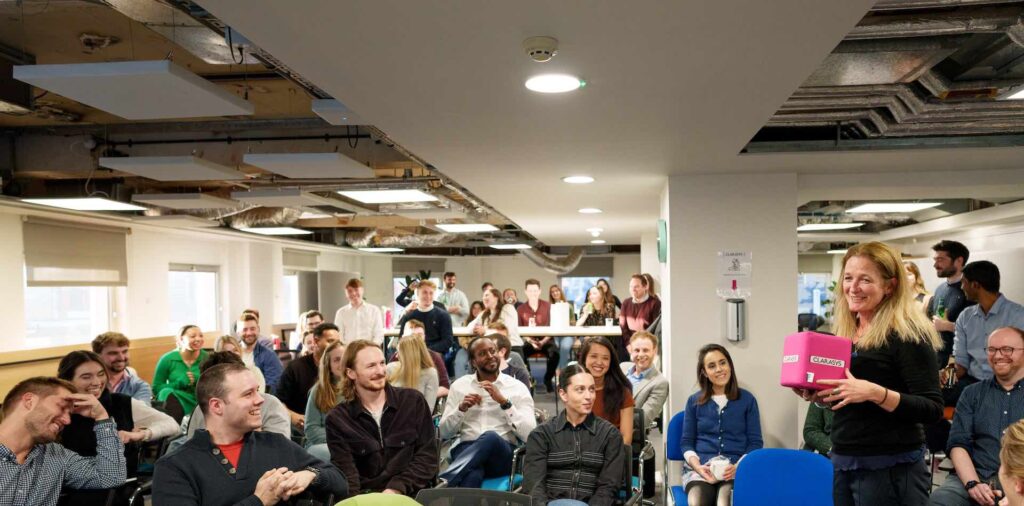Discover how to navigate operating model changes by prioritising people, transparency, career progression, and revenue generation for success.
Navigating operating model changes: Prioritising people for success
Navigating operating model changes: Prioritising people for success
Discover how to navigate operating model changes by prioritising people, transparency, career progression, and revenue generation for success.

Meet the author
Greek philosopher Heraclitus once wrote, “There is nothing permanent except change.” Recent world events will testify to that with seismic shifts in the way we live and work. In times of uncertainty, we cling to routine as a safe harbour in a storm. For some, that can be the day-to-day routine of work, but when that foundation changes, uncertainty will prevail.
Changes to business operating models impact our sense of security. As consultants, whenever we mention operating models in a client setting, people know this means change. This can create panic, misinformed decision-making, and sometimes even a deliberate decision to sabotage the change.
Following on from Archie and Tom’s blog, which urges organisations undergoing transformation not to neglect their people, here, we explore some design-stage approaches that will help you achieve some of the benefits of operating model changes by considering the people who will live through it.
4 design stage approaches to enable success during operating model changes
-
Cost saving
Everyone knows that cost saving often translates to headcount. If this is the case, it’s best to be honest. Create an employee input panel to gauge sentiment. Immediately offer relocation packages or alternative roles, CV writing support, and assist in finding employees new jobs. You want people to leave with a positive view, reduce feelings of resentment, and in some cases even create a thriving alumni network.
Be transparent by sharing the true numbers and the reasons for the operating model change. Transparency demonstrates that a company trusts its employees and people often understand the need for cost saving if the facts are shared. If the reason for cost saving is down to the board or investors, this won’t land well with employees. Leaders should challenge thinking about the true drivers behind the change.
In the eye of the pandemic storm, AirBnB’s CEO Brian Chesky wrote a letter to his team explaining exactly why the firm needed to reduce its workforce. His letter is a masterclass in how to announce change. It’s also an example of how a company should, if it can afford to, look after those who are departing.
Conversely, Meta’s brutal “year of efficiency” messaging landed badly. In attempting to be more transparent, CEO Mark Zuckerberg, created huge uncertainty and resentment. His March 2023 blog spoke about creating a leaner organisation for the future and for shareholders, offering barely more than a nod to the people who would lose their jobs.
-
Career progression
Understand your employees and their career progression expectations. We don’t want people to head for the door and join your competitors because their new career pathways don’t align with their aspirations.
Offer career pathway sessions and showcase the options to your employees – don’t expect them to find their own way. It’s important to allow employees all the time and resources they need to make the new op model work. Touting the benefits of a change process will sound like hollow words later on if they are unable to make it a success.
-
Reduce hierarchy
Reducing hierarchy is great in theory but it only works if people live by it. You may have to undo a lot of old ways of working and embedded cultures – middle management tends to struggle the most with this.
Don’t expect people to understand the norms associated with a new hierarchy. Leadership/Management training will prevent them from feeling ostracised and help to reinforce the new values and visions associated with the hierarchy change. This training should be offered at all levels and embedded within the company culture. This takes time and requires repeated effort – one-off training will not embed new behaviours. Consider a holistic approach that is grounded in behavioural change.
There needs to be a tangible reason for the change (input vs output) and performance criteria should be linked to attributes that will reinforce the new hierarchy.
-
Revenue generation
In order to accept change, employees must see how the new operating model will directly impact the bottom line. Back this up with evidence, research, and pilots. Invite employees to help generate new ideas about how to increase revenue – they often know the industry better than leaders. The likelihood is your people are feeling the pain you are trying to solve, day in and day out, so they will have ideas on how best to address it. By asking them to participate, they get ownership over the design and are more likely to adopt it.
Ask employees to run pilots and involve them in decision-making. Show them the op model may be ever-changing – it’s not a one-time exercise and needs to be flexible to keep pace with the global market. This will help adoption and increase support for follow-on changes.
Summary
Throughout the experience, acknowledge not just the bottom line, assets, and technology, but also remember the people who will need to live and breathe the new world. Ultimately, there is no point in a new operating model if you haven’t got anyone to be a part of it.

